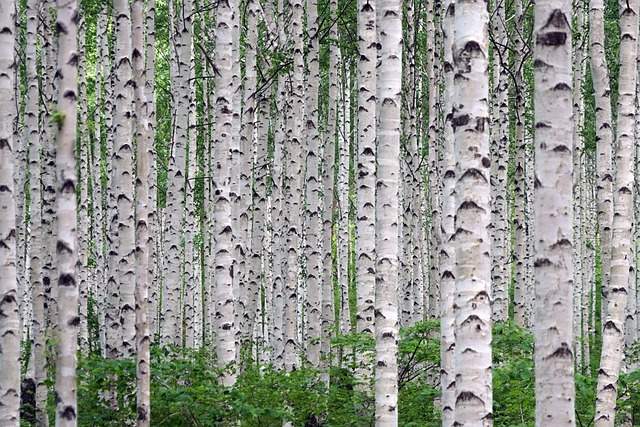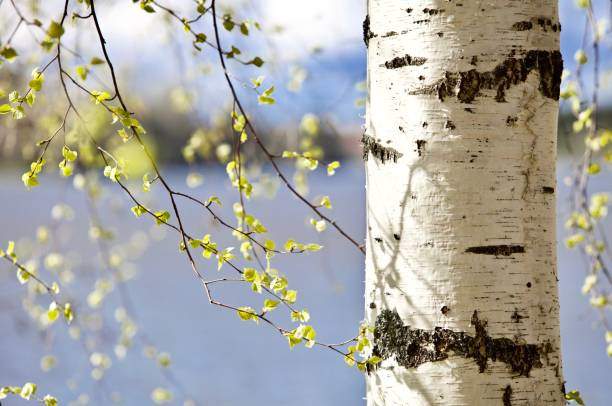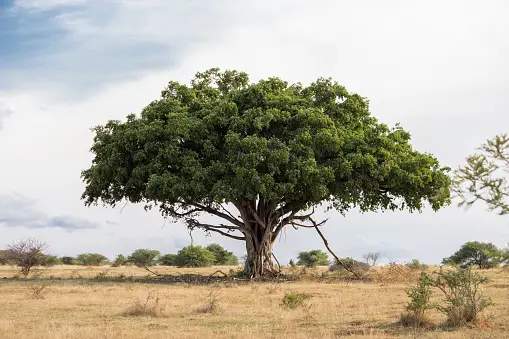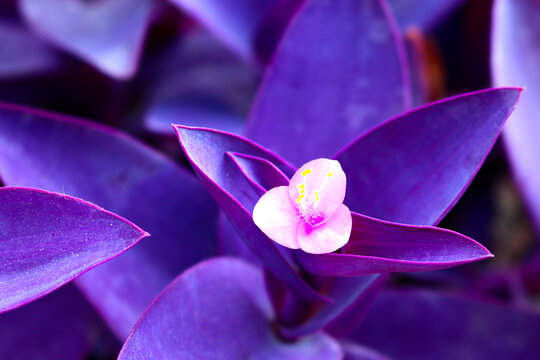Birch Tree Symbolism: Renewal and New Beginnings
Have you ever stood under the gentle shade of a birch tree and felt a sense of calm? I remember the first time I truly noticed a birch tree.
Its white bark gleamed in the sunlight, almost whispering secrets of ancient wisdom. Birch trees have been symbols of various profound meanings across cultures. They remind us of new beginnings, protection, and the eternal cycle of life.
Historical and Cultural Significance

Native American Symbolism
In Native American culture, birch trees stand as powerful symbols of purification and new beginnings. Their white bark is seen as a sign of purity.
Many tribes believed in the birch tree’s healing properties. The Ojibwa tribe, for example, told stories of a spirit-boy who found protection in the hollow trunk of a birch tree, symbolizing the tree’s role as a guardian and guide.
Nordic Mythology
The Norse people held birch trees in high regard, associating them with Freyr, the god of fertility and abundance.
Birch trees were thought to possess magical properties, used in healing rituals and to ward off evil spirits. Their resilience in harsh conditions symbolizes the courage and strength found in nature’s power.
Slavic Traditions
For the Slavic people, birch trees symbolize femininity, beauty, and protection. Associated with the goddess Lada, the birch tree represents love, happiness, and good fortune.
Many Slavic tales feature birch trees as symbols of life and renewal, often depicted as protectors and nurturers.
Celtic Beliefs
The Celts revered the birch tree as a symbol of new beginnings and renewal. Birch was the first tree in the Ogham, the Celtic tree alphabet, representing purification and protection.
During Samhain, bundles of birch twigs were used to drive out the spirits of the old year, embracing a fresh start.
Russian Folklore
In Russian culture, birch trees symbolize purity, renewal, and protection. They are central to many traditional practices, such as using birch branches for purification and protection.
The birch tree is often depicted as a guardian in Russian fairy tales, reflecting its role in providing shelter and safety.
Symbolic Themes and Interpretations

New Beginnings and Renewal
Birch trees often symbolize new starts. They shed old bark and grow fresh, representing hope and renewal. This is a reminder that no matter how tough life gets, there is always a chance for a fresh start.
The tree’s white bark stands for purity and innocence, a clean slate for new chapters in life.
Protection and Purification
Birch trees have long been used in rituals to ward off negative energy. In many cultures, birch branches are placed over doorways to protect homes.
The practice of using birch twigs in purification ceremonies, such as the European birching, symbolizes the removal of negative influences and the embrace of a positive, peaceful state.
Strength and Resilience
Birch trees thrive in tough environments, symbolizing strength and resilience. They grow in areas damaged by forest fires or clearing, demonstrating the ability to overcome adversity. This resilience is a powerful reminder of the strength within us, urging us to face life’s challenges with courage and hope.

Femininity and Fertility
In many cultures, birch trees are linked to feminine energy and fertility. Their slender, graceful appearance and their association with goddesses of love and fertility highlight their role in representing growth, beauty, and the nurturing aspects of nature.
Birch trees are often planted near homes to bring good fortune and protection to families.
Birch Trees in Art and Literature
Artists and writers have long been inspired by the beauty and symbolism of birch trees. Poets like Robert Frost have depicted birch trees as symbols of childhood and innocence.
In his poem “Birches,” Frost uses the image of a boy swinging on birch branches, symbolizing the desire to return to simpler, carefree times.
Artists like Vincent van Gogh and Gustav Klimt have captured the elegance of birch trees in their paintings. The white bark and slender trunks of birch trees add a sense of purity and tranquility to their works, reflecting the profound themes of renewal and resilience.
Practical Uses and Benefits

Environmental Contributions
Birch trees play a vital role in improving air quality by absorbing carbon dioxide and releasing oxygen. They provide habitats for birds, insects, and other wildlife, contributing to biodiversity. Their roots help prevent soil erosion and stabilize slopes, protecting the landscape.
Health Benefits
The leaves and bark of birch trees have been used in traditional medicine for their healing properties. Birch leaves can treat inflammation and urinary tract infections, while the sap is believed to support detoxification and immune health. The presence of birch trees in nature also brings a sense of peace and reduces stress.
Everyday Applications
Birch wood is valued for its strength and durability, making it ideal for furniture and flooring. Birch bark has been used to make canoes, baskets, and other crafts. The sap can be tapped to produce birch syrup and vinegar. Birch trees also provide shade and windbreaks, enhancing the comfort of outdoor spaces.

Conclusion
Birch trees, with their striking white bark and graceful presence, hold deep symbolic meanings across cultures.
They stand as symbols of new beginnings, protection, strength, and feminine energy. Whether in art, literature, or daily life, birch trees inspire us with their resilience and beauty, reminding us of the eternal cycle of renewal and the power of nature to heal and protect.
Have you ever felt the calming presence of a birch tree? It’s like being embraced by Mother Earth herself, offering hope and peace in every rustle of its leaves. Next time you see a birch tree, take a moment to listen to its whispers of ancient wisdom and let its symbolism inspire your soul.








